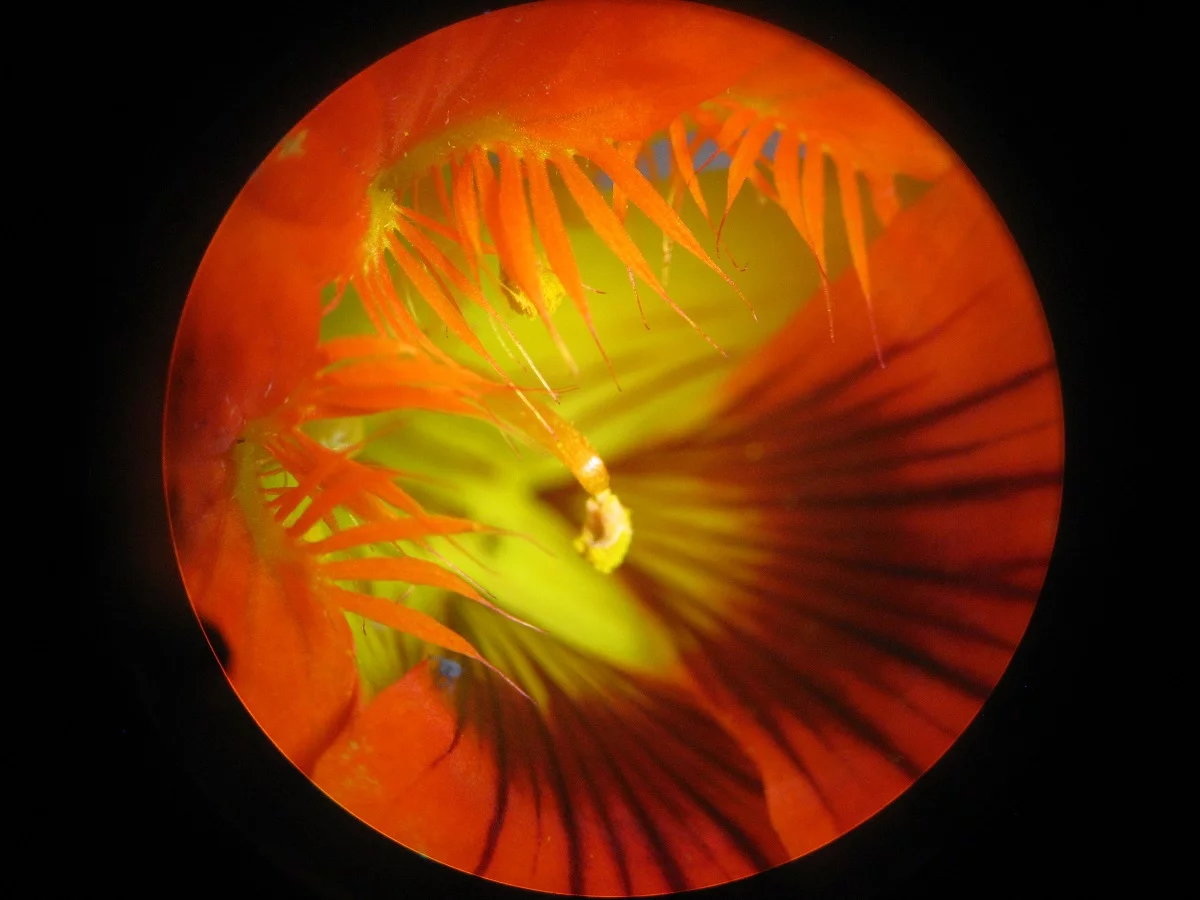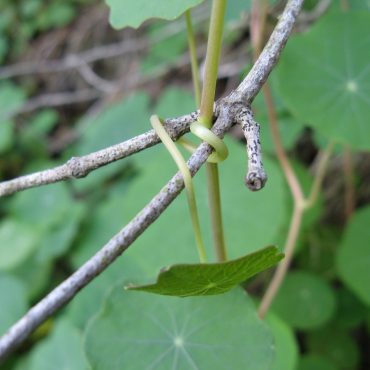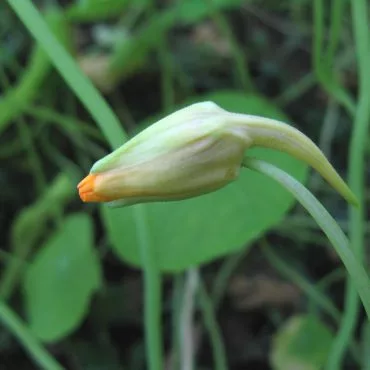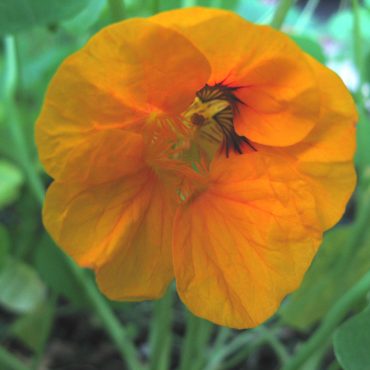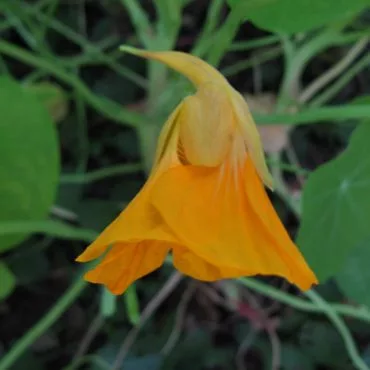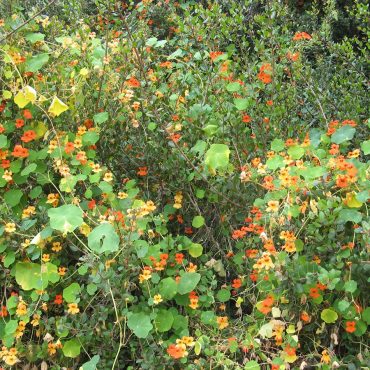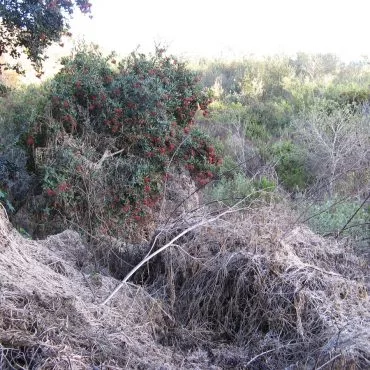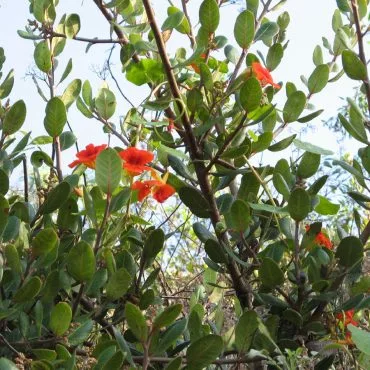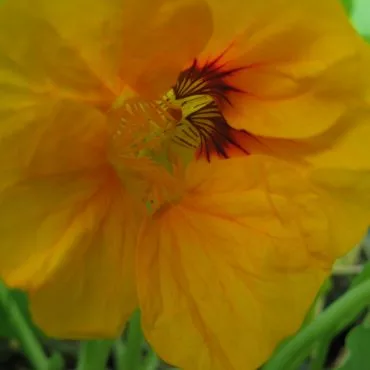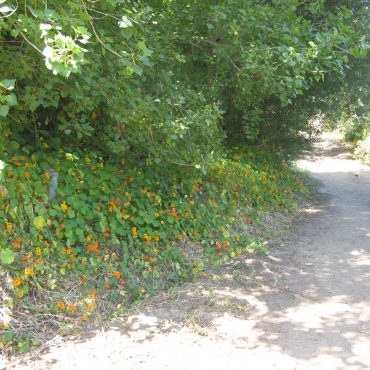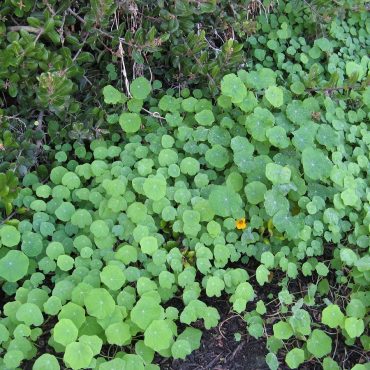Most people recognize vining nasturtiums (Tropaeolum majus), the perky standards of California gardens. Few people, however, have looked closely enough to see the psychedelic display of color deep in a flower’s throat. These patterns may be signal patterns to direct pollinating insects toward the nectar source, deep in the spur behind the petals.
This same easy-care vine, has become a serious pest in California’s coastal wildlands. Nasturtiums originated in the Andes and have been introduced in gardens around the world. In some areas of the Reserve, where runoff from nearby houses provides a bit more fresh water, feral nasturtiums’ engulf trails, trail signs and even large shrubs. A prolific reseeder with few pests, a plant not only produces many offspring, but new seeds are continually entering the Reserve from adjacent gardens, making it difficult – if not impossible – to eradicate.

